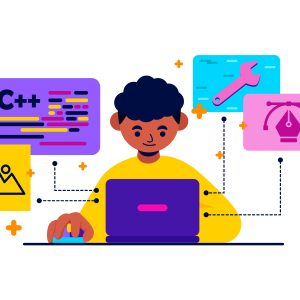Programming languages come in various shapes and sizes, each designed to tackle different tasks and cater to specific needs. While some languages are known for their simplicity and ease of use, others present a more formidable challenge due to their complexity, steep learning curve, and intricate features. In this article, we’ll explore some of the hardest programming languages, examining what makes them difficult and why they are considered daunting by many developers.
A Language for the Brave
Brainfuck, despite its whimsical name, is anything but playful when it comes to programming. With only eight commands and minimalistic syntax, Brainfuck pushes developers to their limits by eschewing readability and conventional programming paradigms. Programs written in Brainfuck often resemble abstract art, with code consisting of cryptic symbols and intricate patterns. While mastering Brainfuck requires exceptional patience and a masochistic streak, doing so can be a badge of honor among programmers seeking the ultimate challenge.
The Esoteric Nightmare
If Brainfuck isn’t challenging enough for you, consider diving into the abyss of Malbolge, widely regarded as one of the most difficult programming languages ever created. Named after the eighth circle of hell in Dante’s Inferno, Malbolge lives up to its infernal reputation with its convoluted syntax, arcane rules, and near-impenetrable obfuscation. Writing even a simple program in Malbolge is an exercise in futility, as the language seems designed to thwart comprehension and defy logic at every turn. For those brave enough to attempt it, mastering Malbolge is an accomplishment few can boast.
A Language of Primal Expression
For developers seeking a challenge wrapped in whimsy, Ook! presents a quirky and unconventional choice. Inspired by Brainfuck and characterized by its primate-themed commands (“Ook. Ook? Ook.”), Ook! challenges programmers to communicate in the language of monkeys. Despite its playful facade, Ook! poses a considerable challenge due to its unconventional syntax and limited expressiveness. Writing meaningful programs in Ook! requires creativity, patience, and a healthy dose of humor, making it a favorite among enthusiasts of esoteric programming languages.
The Antithesis of Clarity
INTERCAL, short for “Compiler Language With No Pronounceable Acronym,” is a tongue-in-cheek programming language designed to be as confusing and convoluted as possible. Featuring bizarre syntax, nonsensical constructs, and intentionally obscure features, INTERCAL delights in confounding programmers and defying comprehension. Writing code in INTERCAL is akin to deciphering an ancient text written in an alien language, with each line of code presenting a new riddle to unravel. While mastering INTERCAL may not have practical applications, it offers a unique and mind-bending challenge for those brave enough to tackle it.
Programming in Two Dimensions
Befunge breaks free from the constraints of traditional programming languages by introducing a novel concept: two-dimensional code execution. In Befunge, programs are represented as grids of characters, and control flow can move in any direction, including up, down, left, and right. This unconventional approach to programming challenges developers to think spatially and navigate the intricacies of two-dimensional code execution. While mastering Befunge requires a shift in mindset and a willingness to embrace unconventional programming paradigms, doing so can unlock new possibilities for creative expression.
Embracing the Challenge
In conclusion, the world of programming is vast and diverse, offering a myriad of languages tailored to different skill levels and preferences. While some languages are renowned for their simplicity and accessibility, others present a formidable challenge to even the most seasoned developers. Whether it’s Brainfuck’s minimalistic syntax, Malbolge’s cryptic rules, or INTERCAL’s deliberate obfuscation, each language on this list offers a unique and daunting experience for those brave enough to explore its depths. While mastering these languages may not have practical benefits, doing so can sharpen your problem-solving skills, expand your programming repertoire, and foster a deeper appreciation for the art and science of coding. So, if you’re feeling adventurous and up for a challenge, why not dive into the world of the hardest programming languages and see where the journey takes you?




